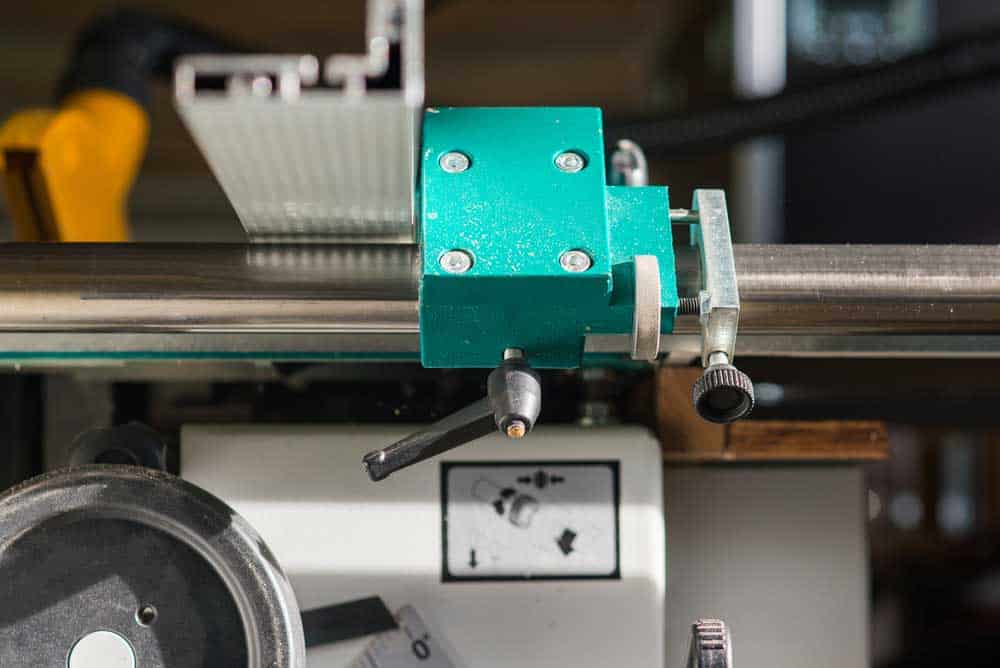When you use high-powered machines, you need to know how to minimize vibration when cutting wood.
Vibrations are a no-brainer since these machines have so many high-speed moving parts and so much force being made during the cutting process.
While you might experience some vibration, you can reduce it for a better cutting experience.
From uneven friction to an imbalance in the machine, you can find a way to minimize the vibration when cutting wood. Let’s read further.
Why Does Vibration Happen During Machining?
Vibration in machining is a side effect of cutting wood. Most machines, such as lasers or waterjets, are made to operate smoothly and avoid vibration.
Sometimes, too much vibration while cutting cutting tells you that there is a problem with the machine. If this is not sorted out, the unwanted vibration can cause more damage.
Improper cutting direction
Cutting wood in the wrong direction causes the fibers to tear instead of cut, which causes issues with vibration.
When these wood fibers are torn, the wood will vibrate slightly, which gives you an uneven surface to work with.
Additionally, the torn wood fibers make a fuzzy rough surface. When the tool makes contact with this roughness, it makes more vibrations.
Excessive force used in cutting
You have to let the tool do all the cutting for you. While forcing your tool into the wood to get it done quickly is tempting, it is not the proper way to turn.
The extra force placed on the wood will lead to unwanted chatter time.
You need to use a light touch with enough pressure to keep the tool moving in the right direction.
This will reduce marks because there will be no vibrations.

(using a table saw)
Improper tool sharpening
When you do not sharpen the tool properly, you must apply more force to cut and get through the wood.
When you use more force against the wood, this makes the whole thing vibrate.
This is also called chatter and makes marks on the wood. So, keep your tools like your saws and such very sharp.
Improper mounting of turning stock
Not properly mounting your turning stock is a big problem with vibrations. When you do side grain projects, you must keep things well-centered when mounting.
Spindle projects also need good centering, but force is also a good factor to think about.
Use just enough force to keep the wood in place but not too much that it will start flexing.

(machines used to cut wood)
Wood condition
If the wood you’re cutting is not in good condition, it may cause the machine to vibrate.
This is especially true if it is too hard and you apply too much force to the surface.
Working with irregular pieces
Dense and heavy pieces of wood need lots of force to cut through.
With more force your machine experiences, the more vibrations you will see.
Irregular pieces of wood can also do this, as the machine’s blade may not get through the wood.

(irregular pieces of wood)
No set speeds
Usually, experts recommend that you keep your machines at a fairly slow speed when cutting wood.
This, paired with a sharp blade, will give you a perfect cut.
However, if you unnecessarily increase the speed, there will be a great imbalance, which causes unwanted vibration.
This also reduces the life of your machine.
Weighted response
When the weight isn’t balanced in the machine that you’re using, it will cause a vibration.
This heavy spot in the machine, especially with denser wood, can make a centrifugal force, which you don’t want!
This is caused by something as simple as dirty blades, not having balance weights or something more hectic like manufacturing faults.
How to Minimize Vibration When Cutting Wood
Vibration is not always avoidable, but they tell you about the load and conditions that the machine is experiencing.
Too many vibrations do not spell good news for your machine or project.

(a carpenter feeding a plank to cut)
Here are some ways to reduce vibration when cutting wood:
- Pick the right saw blade– You have to use a good, high-quality saw blade that is made for the type of cut you want, whether cross cuts or rip cuts. The blade must be sharp, which already reduces the vibrations.
- Make sure that the blade is aligned– When the blade is not straight, vibrations will happen. So, ensure that it is straight and tightened.
- Dampening materials– This is probably the simplest solution! Just put a rubber mat or a specially designed anti-vibration pad under your cutting place and work area. This will absorb some of the vibrations as you cut the wood.
- Make sure your wood is secure– Use clamps or other items to ensure that the wood is secure on the work surface. A stable area reduces vibrations. For longer pieces of wood, use support stands to prevent them from sagging.
- Dampen your tools– You should consider using special anti-vibration gloves or wrapping the handle of the tool with rubber. This helps with absorbing the vibration.
- Maintenance of the machines– You must always clean and maintain your saw or other machines to ensure it works properly. With this, you should also ensure that the blades are balanced too.
- Use special blades– If you are using jigsaw or reciprocating saws, they may come with specialty blades that can reduce vibrations. Consider using these for cutting your wood.
- Don’t cut on the floor– Try to set up your cutting area on a platform or a good workbench. This will reduce the vibration you may get through the ground.
Conclusion
Vibrations can be hard to deal with, but luckily, you can sort it out using one of the solutions above. Don’t forget to get assistance when needed!
